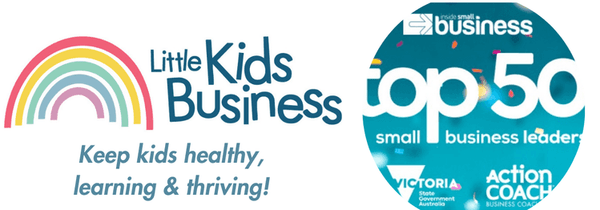In the intricate tapestry of child development, the significance of quality sleep cannot be overstated. As parents, guardians, or caregivers, we are entrusted with the responsibility of creating an environment that fosters optimal growth, both physically and mentally. Among the myriad considerations for crafting an ideal sleep space, the role of bedding, particularly pillows, emerges as a pivotal factor. This extensive exploration delves into the profound importance of selecting hypoallergenic pillows for kids' health. From gaining a comprehensive understanding of common allergens to conducting an in-depth examination of the benefits derived from hypoallergenic materials, this guide aspires to provide profound insights into cultivating a healthy and nurturing sleep environment for the youngest members of our families.
The Foundations of Children's Health
1. Sleep and Development
Quality sleep is the cornerstone of a child's growth and development. Within the cocoon of sleep, the body undergoes intricate processes crucial for physical and cognitive well-being. Adequate and restful sleep is inexorably linked to improved mood, enhanced learning, and the consolidation of memory, fostering overall superior daytime functioning.
2. Allergens in the Sleep Environment
Children, especially those grappling with allergies or asthma, confront a heightened vulnerability to allergens lurking in their sleep environment. Dust mites, pet dander, mold, and pollen are among the common culprits. Exposure to these allergens can trigger allergic reactions, affecting sleep quality and overall health.

Understanding Hypoallergenic Pillows
3. What Makes a Pillow Hypoallergenic?
The essence of hypoallergenic pillows lies in their design explicitly crafted to minimize allergen exposure. Meticulously selected materials for fillings and covers create a sleep surface that is inherently resistant to the growth of common allergens. The crux lies in a meticulous selection that discourages allergen accumulation.
4. Common Fill Materials in Hypoallergenic Pillows
Hypoallergenic pillows often boast an arsenal of materials such as synthetic fibers, down alternatives, natural latex, or organic components. In stark contrast to traditional pillows that might serve as havens for allergens, these materials significantly reduce the likelihood of triggering allergies, making them the prudent choice for children with sensitivities.
The Impact of Allergens on Children's Health
5. Allergies and Sleep Disruption
For children grappling with allergies, the nocturnal encounter with allergens can translate into discomfort and sleep disruption. Sneezing, congestion, and itchy eyes become unwelcome companions, disrupting the natural progression of the sleep cycle and depriving children of the profound benefits of deep, restorative sleep crucial for optimal health.
6. Asthma and Allergen Sensitivity
Children afflicted with asthma, a prevalent respiratory condition, often teeter on the brink of heightened sensitivity to allergens. Dust mites and pet dander, commonplace in bedding, can serve as potent triggers for exacerbating asthma symptoms. Hypoallergenic pillows, acting as proactive agents, help curtail these triggers, fostering an environment conducive to respiratory well-being
 .
.
Benefits of Hypoallergenic Pillows for Kids
7. Reduced Allergen Accumulation
At the core of the benefits derived from hypoallergenic pillows lies their innate ability to resist the accumulation of allergens. The materials employed in these pillows create an inhospitable environment for dust mites, mold, and other common allergens, significantly diminishing the risk of exposure for children.
8. Improved Respiratory Health
By minimizing exposure to allergens, hypoallergenic pillows become staunch allies in the pursuit of enhanced respiratory health for children. This is particularly pertinent for those with allergies or asthma, as a pristine sleep environment facilitates unimpeded breathing, reducing the likelihood of respiratory symptoms.
9. Prevention of Skin Irritation
Beyond respiratory advantages, hypoallergenic pillows act as guardians against skin irritation. Some children may be prone to skin reactions triggered by allergens present in traditional pillows. Hypoallergenic materials, including organic cotton covers, emerge as the vanguards against skin-related issues, fostering holistic comfort.
10. Support for Allergy Management
For children navigating the realm of allergy management, the incorporation of hypoallergenic bedding, encompassing pillows, assumes a pivotal role. It seamlessly integrates into the broader strategy of reducing exposure to allergens, amplifying the efficacy of allergy treatments and minimizing the reliance on medication.
Choosing the Right Hypoallergenic Pillow
11. Consideration for Fill Material
The journey toward the ideal hypoallergenic pillow commences with a discerning consideration of fill materials. Memory foam, down alternatives, natural latex, and organic components present a palette of options. Each material bears unique characteristics, offering a harmonious blend of support, comfort, and allergen resistance.
12. Allergen-Resistant Pillow Covers
The symphony of hypoallergenic benefits extends to the covers enveloping these pillows. Opting for pillow covers woven from tightly knit fabrics emerges as a strategic choice, creating an impermeable barrier against dust mites and other allergens. The ease of removal and machine washability amplifies the convenience of maintenance.
13. Size and Support
Customization assumes the reins when selecting the right hypoallergenic pillow, with due consideration for size and support. Tailoring the pillow size to align with your child's age and sleep preferences is paramount. The selected pillow should provide optimal support for the head and neck, striking a delicate balance between elevation and plush comfort.
Maintaining a Healthy Sleep Environment
14. Regular Cleaning Routine
The quest for a health-conscious sleep environment transcends the initial selection of hypoallergenic pillows, extending into a commitment to regular cleaning routines. Establishing a regimen for washing bedding, including pillow covers, sheets, and mattress protectors, stands as a foundational practice. Regular cleaning emerges as a stalwart guardian against allergens, fostering an atmosphere of comprehensive hygiene.
15. Encourage Good Sleep Hygiene
The ethos of good sleep hygiene extends beyond the physical aspects of the sleep environment, encompassing personal habits. Encouraging children to embrace good sleep hygiene involves instilling practices such as washing their face and hands before bedtime. This meticulous ritual minimizes the transfer of allergens to the pillow, underscoring the interplay between personal habits and overall health.
One cornerstone of good sleep hygiene is maintaining a consistent sleep schedule. Children thrive on routine, and having a set bedtime and wake-up time helps regulate their circadian rhythm, promoting better sleep quality and overall health.
Creating a comfortable sleep environment is paramount. This involves ensuring a comfortable mattress and pillows, appropriate room temperature, and minimal noise and light. For children, the sleep space can be personalized with familiar and comforting items, fostering a sense of security.
Modern life is saturated with screens, and limiting screen time before bedtime is crucial for good sleep hygiene. The blue light emitted by devices can interfere with the production of the sleep hormone melatonin, making it harder for children to fall asleep. Encourage activities that promote relaxation, such as reading a book, in the hour leading up to bedtime.
Nutrition plays a role in sleep hygiene as well. Encouraging a balanced diet and ensuring that children are not overly hungry or too full before bedtime can contribute to better sleep. Additionally, maintaining proper hydration throughout the day supports overall health and can prevent disruptions during sleep.
Going Above and Beyond: Elaborating on the Nuances
In the pursuit of an exhaustive exploration, it becomes imperative to unravel the subtleties that elevate the decision to opt for hypoallergenic pillows into a holistic strategy for cultivating optimal health in children.
Customization for Individual Needs
Each child, a unique tapestry of preferences and needs, necessitates a bespoke approach. Some may benefit from pillows offering additional neck support, while others might find solace in pillows featuring cooling properties. The nuanced understanding of your child's specific requirements paves the way for customization, ensuring that the pillow not only addresses allergen concerns but also aligns seamlessly with their individual comfort prerequisites.
Educating Children on Allergen Avoidance
Empowering children with knowledge becomes a formidable tool in the arsenal against allergens. Teaching them the intricacies of allergens and the strategies to avoid them fosters a sense of agency. Children, armed with this knowledge, become active participants in maintaining a clean sleep environment, setting the stage for a lifetime of conscious health decisions.
Investment in Long-Term Health
The decision to opt for hypoallergenic pillows transcends immediate comfort; it manifests as a strategic investment in a child's long-term health. The benefits extend beyond childhood, permeating adolescence and into adulthood. Early establishment of good sleep habits not only impacts their immediate well-being but serves as a compass guiding them toward a future characterized by robust health and vitality.
Nurturing Health Through Hypoallergenic Bedding
In drawing the curtain on this extensive exploration, the choice of hypoallergenic pillows for kids emerges not merely as a pragmatic decision but as a resounding commitment to nurturing their health and well-being. The understanding of the impact of allergens on children's sleep, coupled with a profound appreciation for the multifaceted benefits of hypoallergenic materials, positions parents as architects of a safe and supportive sleep environment.
The investment in hypoallergenic bedding, encompassing pillows, transcends the realms of comfort—it evolves into the cornerstone of a healthy and restful childhood. As parents, guardians, or caregivers, the choices made in shaping a child's sleep space ripple through time, impacting not only their present but laying the groundwork for a future characterized by well-being and vitality.
In the realm of sleep, where growth and restoration intertwine, let the decision to opt for hypoallergenic pillows stand as a testament to our unwavering commitment to their flourishing health. As we traverse the intricate landscape of parenting, may our choices reflect a dedication to providing the youngest members of our families with an environment that nurtures not just their bodies but their spirits, ensuring a journey marked by vitality, resilience, and the profound benefits of sound

